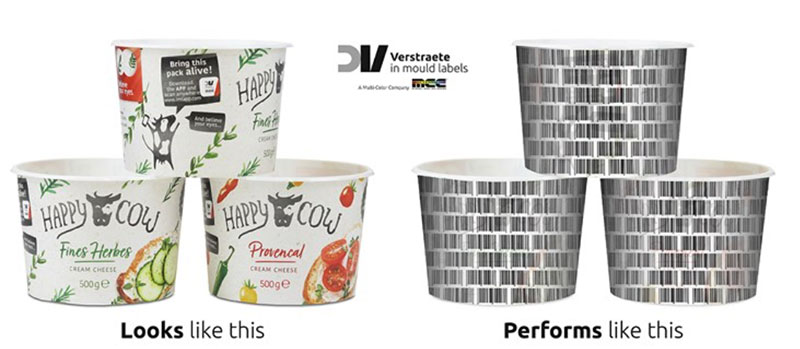Invisible Labeling for High-Quality Packaging Recycling

The Holy Grail 2.0 initiative led by the AIM-European Brands Association and powered by Digimarc is transforming the recycling landscape through innovative technology.
This project leverages digital watermarks to significantly improve the sorting and recycling of packaging. The goal is clear: enhance recycling efficiency and quality by embedding invisible, detailed codes into product packaging.
You can also read: Packaging Sorting 4.0: Digital Watermarks & Fluorescent Markers
What is a Digital Water Mark?
Digital watermarks act much like a sophisticated, and invisible, barcode that spans the entire package. They store essential data about the package’s material composition and the optimal recycling process. This initiative addresses the need for more advanced sorting technology in recycling facilities, which currently struggle to accurately sort the diverse materials found in today’s packaging.
Digimarc is at the forefront of this technology, providing the digital watermarking solutions crucial for the project’s success. Moreover, these watermarks allow high-speed cameras and advanced scanners in recycling centers to detect and interpret the packaging information rapidly. This capability ensures the correct sorting of materials, significantly reducing the risk of contamination. This frequently happens when workers incorrectly identify materials, rendering large quantities of recyclables unusable.
Holy Grail 2.0 Initiative
The implementation of Holy Grail 2.0 offers significant benefits. Recyclers can achieve more precise sorting, which is essential for producing high-quality recycled materials. Additionally, manufacturers and brands benefit too, as they can ensure their packaging designs comply with sustainability goals and regulatory demands. Consumers increasingly seek out companies that demonstrate environmental responsibility, and this technology helps brands meet that demand.
Beyond improving recycling processes, digital watermark technology also holds the potential to revolutionize entire supply chains. By boosting package sorting efficiency, enhancing recycling rates, and improving the quality of recycled materials, the technology supports a broader move towards a circular economy. In such an economy, businesses reuse materials more extensively and reduce waste dramatically.
Invisible Labeling Expansion
Support for Holy Grail 2.0 is growing across Europe, with a wide array of global brands, retailers, and packaging companies on board. This collaboration highlights a significant industry shift towards sustainable practices, spurred by technological advancements.
As environmental concerns mount, the world is actively seeking effective and sustainable waste management solutions. Holy Grail 2.0, with its use of Digimarc’s digital watermark technology, offers a promising path forward. It not only enhances current recycling capabilities but also fosters a sustainable approach that could define the future of environmental conservation.
Although Holy Grail 2.0 is primarily a European initiative, several U.S.-based companies and global brands with a significant presence in the U.S. market are participating or showing interest in adopting similar technologies. As a result, the interest is driven by the push towards sustainability from consumers, governments, and environmental groups, pressing companies to find innovative solutions to waste management challenges.
